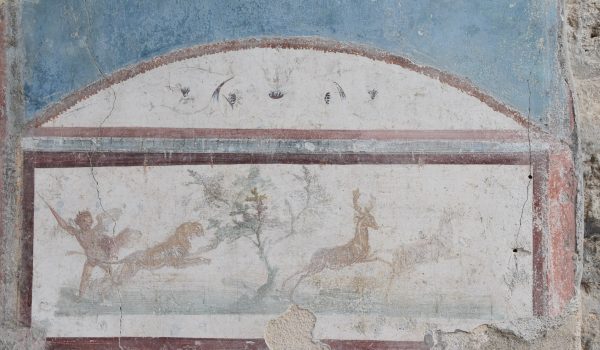A first part of the project was dedicated to decorations such as the wall paintings of the fauces and the ala, as well as the mosaic on the floor of the tablinum. In the preliminary stage of the project, the conservation status was documented in order to identify and understand the causes and mechanisms of the and study of preceding interventions, when identified, enabled to provide
an explanation for the presence of heterogeneous materials and their interaction with the constituent ones. On the basis of these studies, several conservation interventions were started, including, in all cases, a preliminary securing of the preparatory layers, followed by different subsequent phases depending on the deteriorations identified. In 2017 these activities were accompanied by the project ‘Da Pompei a Venaria. Per un progetto di conoscenza, valorizzazione, divulgazione: la Casa della Caccia antica.’, with the aim of promoting an interdisciplinary research involving researchers of arts subjects (archaeologists, architects, art historians), diagnosticians (chemists, geologists, physicists, biologists), as well as experts on imaging and IT tools. The gathered documentation will be the basis for the revision of the construction sequences of the complex. In general, in many spots of the investigated sector, wall segments dating back
to the original complex of the second half of the II century B.C. can be identified, along with several
successive construction phases and a large reconstruction that seems to date back to the interventions following the 62 A.D. earthquake. Survey operations of the complex and a shooting campaign were launched with the aim of implementing the 3D model of the domus.
Within the framework of the educational activities of the Course on Restoration and Conservation of
Cultural Heritage, restoration works on a large selection of artefacts (frescoes, sculptures, furniture, metal vases and tools, furniture casts, etc.) are being carried out.


